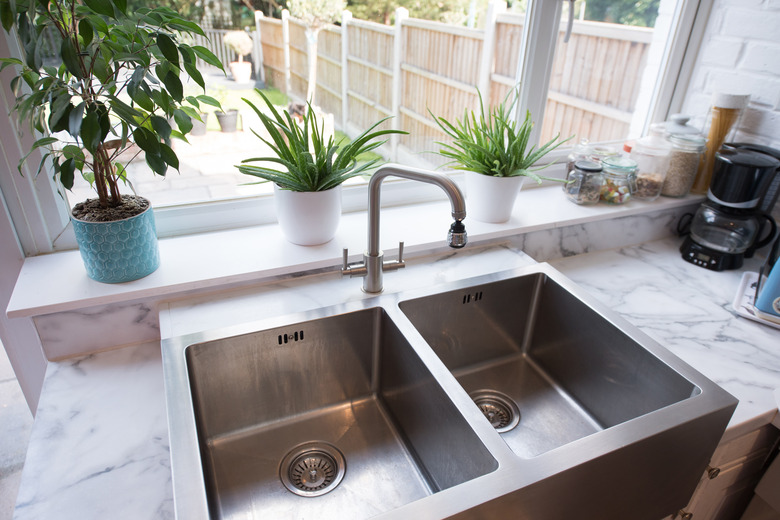How To Clean A Dull Stainless Steel Sink
It sounded like a match made in kitchen heaven: You're a busy person and your stainless steel sink would accommodate your lifestyle by being delightfully low maintenance. In reality, though, you can ignore a stainless steel sink for only so long before it, like a mischievous child, cries out for attention. Silence those cries and restore its shine with a two-step approach: Give it the daily care it requires and shower it, quite literally, with some special attention about once a week.
Cleaning Stainless Steel Sink Surfaces
Cleaning Stainless Steel Sink Surfaces
Cleaning stainless steel sink surfaces after every use with soapy water and a soft sponge keeps gunk from building up on it. Drench the sink with water and then buff it dry to prevent water spots and mineral deposits from forming on the sink. This step alone will do wonders in keeping your sink looking its best day to day.
Don't store the wet sponge in or on the sink, however. Wet sponges, as well as wet cloths and cleaning pads, can eventually cause surface rust on stainless steel. Avoid using steel wool to clean stainless steel, as it can scratch the surface and leave metal remnants that can rust. Rinse out the sink anytime you use soap to remove chlorides that can cause corrosion.
Use Baking Soda
Use Baking Soda
Restore stainless steel and bring the shine back to your stainless steel sink by making a cleaning paste of baking soda and water. The baking soda creates a scouring effect without scratching the surface. Anything more abrasive, whether it's a cleaner or a cleaning tool, can scratch your stainless steel sink and make it look more dull.
Cover the sink with the paste. Rub the sink in the direction of the natural stainless steel grain, visible in the polish lines on the surface, with a sponge. Drench the sink with water and wipe it dry. If your sink needs a little more cleaning, spritz the baking soda with vinegar to create a bubbling reaction before scrubbing and rinsing the surfaces.
Remove Spots With Vinegar
Remove Spots With Vinegar
Stainless steel is durable, but it can show water spots more than other types of sinks. Cleaning stainless steel sink water spots is easy with white vinegar. Spritz the vinegar onto the surface. Alternatively, pour some club soda on a sponge and wipe the sink. In both cases, wipe the sink with a sponge soaked with water before wiping the sink dry.
Eliminate Rust and Stains
Eliminate Rust and Stains
Eradicate surface rust and other stubborn stains, and the accompanying dullness, by soaking a rag or paper towel with rubbing alcohol and wiping the sink. Alternatively, combine 3 parts cream of tartar to 1 part hydrogen peroxide. Cover the stains with the mixture and let it sit for 15 minutes. In both cases, flush the sink with water and wipe it dry.
Rub on Olive Oil
Rub on Olive Oil
A thin layer of olive oil can help minimize scratches and make your sink shiny again. Dry the sink completely before applying the oil. Use a soft cloth with a few drops of olive oil on it to buff out the sink.
